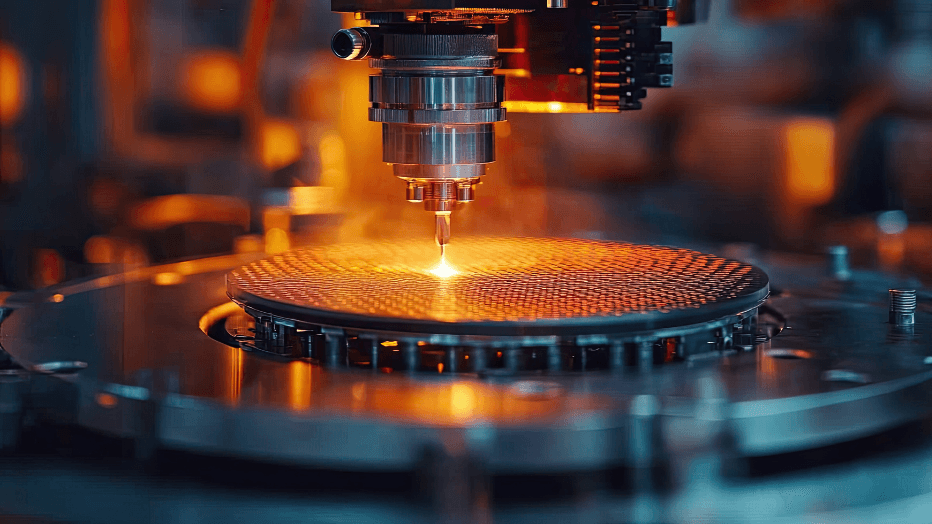The semiconductor sector has gone through several phases over the past few years. Initial supply shortages gave way to a broader normalisation of demand, followed by a slower period as inventories adjusted and capital spending became more selective.1 Through it all, the structural drivers of the sector remained intact. What is changing now is that the market is beginning to reflect those fundamentals again. A more balanced supply environment, combined with greater visibility across end markets, is starting to support a recovery that is both broader and better supported than it was twelve months ago.
The Global X Semiconductor ETF (ASX: SEMI) has returned more than 11% over the past month.2 The gains have not been concentrated in one company or one category, but, instead, a wide group of holdings across memory, logic, analog and equipment have contributed meaningfully. This trend reflects a shift in market positioning and expectations that is now being backed by operational follow through and fundamental improvements.
Key Takeaways
- The semiconductor recovery is being supported by stronger fundamentals across memory, analog, logic and capital equipment segments.
- Supply discipline and more predictable end-market demand are helping stabilise pricing and encourage targeted capital spending.
- The Global X Semiconductor ETF (ASX: SEMI) offers diversified access to companies across the semiconductor value chain that are positioned to benefit from this shift in market conditions.
This Is Not Just About AI
Artificial intelligence continues to be a major structural driver for semiconductors, but it is not the main reason the sector is seeing improvement right now. The recovery underway is broader and more linked to supply discipline, inventory normalisation, and steady demand across traditional end markets.3
Memory provides one of the clearest signals for the sector, as it accounts for a large share of semiconductor industry revenue and often leads the cycle. DRAM and NAND, used for processing and data storage across phones, PCs, and servers, are seeing more stable pricing as customers return with greater confidence.4 This is not because of a sudden demand spike, but because production was cut early and inventories have now cleared through the system. The result is a more balanced environment where pricing can reset gradually without distorting fundamentals.

A similar pattern is emerging across equipment, testing, and packaging firms, which tend to lead the cycle given their exposure to early-stage production and planning. Stronger pipelines here suggest that manufacturers are preparing for sustained output rather than reacting to one-off orders.5
Activity in analog semiconductors is beginning to stabilise, with recent earnings from key suppliers showing signs of steady demand across auto, industrial, and communications end markets. Analog Devices, for example, reported a return to sequential revenue growth in its latest quarter, with strength in industrial automation and energy systems contributing to improved margin performance. These types of chips typically lag the broader cycle, so early signs of recovery suggest that the improvement is becoming more widely distributed across the value chain.6
The common thread across all of this is breadth. It is not a one-theme rally or a single-product move. Demand is re-emerging across multiple industries and production layers, which makes the recovery more durable and more investable.7
Capital Spending and Order Patterns Are Starting to Matter Again
One of the more notable shifts in recent months has been the return of more structured capital spending plans from key customers. Throughout 2023, many firms took a cautious approach to new orders and deferred expansion. That is starting to change. Foundries are confirming new customer allocations. Equipment makers are seeing higher utilisation as inventory levels normalise, customer forecasts firm up, and confidence returns to capital spending plans across foundries and packaging. Packaging capacity is being booked out earlier, with clients signalling firm delivery windows.8

What makes this cycle different from the last is how targeted the investment has become. Companies are not spending indiscriminately but are allocating capital where the return profile is clearer. This includes advanced packaging, high bandwidth memory, and application specific processing.9 These are segments that rely on long lead times and strong coordination across the supply chain. When orders start to move in those areas, it often signals that the broader recovery has moved past the early stage.
For investors, the return of capital spending is important. It underpins the backlog for equipment names. It validates the forward assumptions being made by materials suppliers and testing firms. And it confirms that customers are no longer sitting on the sidelines. That change in behaviour is a key signal that the market is beginning to price the sector more rationally again.
Valuations Are Still In Transition
Despite recent gains, the semiconductor sector is still pricing in the caution that defined most of 2023. Capital spending was deferred, inventories took time to clear, and margin expectations were reset across multiple verticals. These factors weighed on sentiment and contributed to the 6.1% YTD decline, even as broader tech names tied to AI platforms held up better. As a result, many semiconductor stocks continue to trade below long-term valuation averages, offering selective entry points as fundamentals recover.

The Global X Semiconductor ETF holds a mix of global semiconductor companies across logic, memory, analog and capital equipment. It captures the breadth of the sector without over relying on any single company or theme. And because the fund is rebalanced regularly, it adjusts with the market rather than chasing short term trends.
Why This Matters Now
The recovery unfolding in semiconductors is being supported by tangible shifts in how companies manage production, allocate capital, and respond to more consistent demand signals. Activity is broadening across memory, analog, logic, and equipment, with many companies now reporting clearer visibility and steadier margin progression. These improvements follow a period of adjustment, where inventories were drawn down, supply chains stabilised, and capital spending became more deliberate. That reset is starting to show through in order patterns and operational performance.
As the market begins to reprice the sector with fundamentals back in focus, the Global X Semiconductor ETF offers a way to access that transition through a diversified set of companies aligned with the key drivers of this next phase.

Note: SOX refers to the Philadelphia Semiconductor Index, which is heavily weighted toward large US chipmakers and does not fully capture global or upstream exposures included in SEMI’s index. Past performance is not a reliable indicator of future performance.










